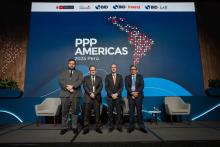
The entity published on Thursday the results of the historical data on monetary poverty, extreme poverty and the Gini coefficient between 2012 and 2020, taking into account several changes in the Colombian population and methodological adjustments in the surveys that allow the construction of these indicators.
Since Thursday, Colombia has more precise historical records on the situation of poverty and inequality.
The National Administrative Department of Statistics (DANE) published the results of a process of linking the figures from 2012 to 2020 on monetary poverty, extreme monetary poverty and the Gini coefficient in the coffee-growing country.
Broadly speaking, the entity released a series of data on poverty and inequality based on a more up-to-date database on the Colombian population: the information provided by the 2018 population census (until now, statistics from the 2007 census were used).
Piedad Urdinola, director of DANE, explained that, when comparing the population projections provided by the last two national censuses (2005 and 2018), it was evident that there are fewer people in Colombia than had been initially estimated.
While 2007 projections indicated that Colombia had around 50 million inhabitants, in 2020 this figure was adjusted to around 48 million.
Basically, the gap of two million people changes the basis on which monetary poverty indicators are calculated, hence the need for a link between the new data and the old one.
In addition, new methods of analysing monetary poverty data were implemented, following recommendations from international organisations such as the Economic Commission for Latin America and the Caribbean (ECLAC) and the DANE Committee of Experts on Poverty.
To understand the following results, it is best to start with basic definitions.
According to DANE, a household is considered to be in a state of monetary poverty when its monthly income is not enough to cover essential expenses, such as housing, transportation, clothing and food. The most recent report from the entity indicates that 16.7 million people in Colombia are in this situation.
On the other hand, extreme monetary poverty occurs when household income is not even sufficient to guarantee adequate food (2,100 calories per person per day). In 2023, nearly 5.7 million Colombians lived in these conditions.
In addition, inequality is measured by the Gini coefficient, an indicator that varies between 0 and 1: the closer to 0, the greater the equality, and the closer to 1, the greater the inequality in income distribution.
POVERTY FIGURES
- Monetary poverty : new data from DANE indicate that, in 2012, 40.8% of the Colombian population was in a situation of monetary poverty.
By 2023, that figure dropped to 33%, with a notable rebound to 42.5% in 2020, due to the effects of the pandemic.
- Extreme poverty : rose from 11.7% in 2012 to 11.4% in 2023. In 2020, due to Covid-19, a significant increase was also observed, reaching a peak of 15.1%.
- Gini coefficient : This inequality indicator fell from 0.546 in 2012 to 0.522 in 2023. According to experts, a decrease in the Gini coefficient reflects an improvement in income distribution.
The first conclusion from the data published by DANE on Thursday is that monetary poverty in Colombia was higher than initially believed.
Specifically, the merged series show slight increases (not exceeding one percentage point) in each of the years reviewed compared to the original series.
It should not be overlooked that the merger incorporated methodological adjustments in the analysis and updated data on the Colombian population.
Due to these differences in the base, the report published this Thursday by DANE is not comparable with the original series, but rather represents a new starting point for analyzing the evolution of poverty and inequality.
The entity also reiterated that the lines of monetary poverty and extreme monetary poverty were not modified in the merger.
In its 2023 report, DANE established the monetary poverty line per person in a family unit at $396,864 (US$90.8). In the case of a household of four people, the threshold is $1,587,456 (US$363.4). Meanwhile, the extreme monetary poverty line per person was set at $198,698 (US$45.4) and, in the case of a household of four people, it is $794,792 (US$181.9).
The DANE director stressed the importance of having updated figures on poverty and inequality, pointing out that these are essential for defining public policies and for strategic decisions in the private sector.
In addition, they allow for control and surveillance over the country's social conditions, especially in a context where Colombia is among the most inequitable countries in the world.










